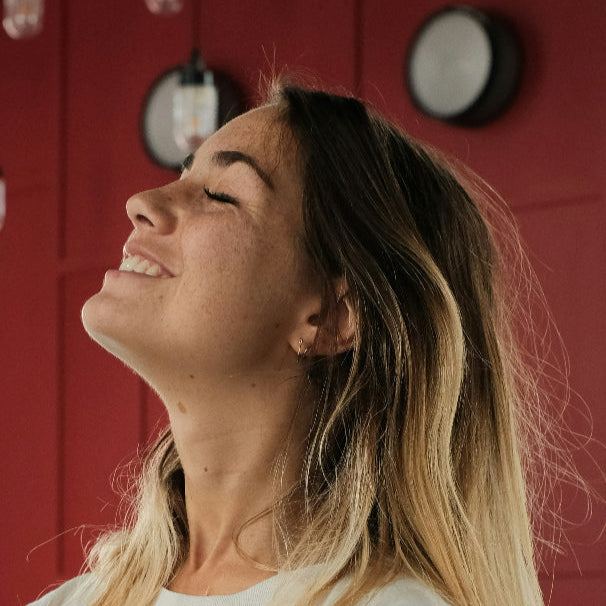Whether you're uncorking a bottle for a quiet night in or saving a special vintage for a milestone celebration, one question always seems to bubble up: should this wine be refrigerated? It’s a deceptively simple question, but the answer is layered—like a good Bordeaux. Wine storage isn’t just about keeping your bottles out of the sun; it’s a delicate balance of temperature, humidity, and timing. And yes, sometimes, your fridge plays a role—but not always the way you think.
This guide is for anyone who’s ever wondered if their Pinot Noir is suffering in the pantry or if their Sauvignon Blanc is too cold to taste anything at all. Whether you’re a casual sipper, a budding collector, or someone who just wants to stop wasting half-finished bottles, we’ll walk through the science, the practical tips, and the common mistakes when it comes to storing wine—before and after opening.
Understanding Wine Storage Basics
Wine is alive. It’s constantly evolving, even in the bottle. And like anything alive, it’s sensitive to its environment. The four main enemies of wine? Temperature, light, humidity, and vibration.
- Temperature: The sweet spot for most wines is around 55°F (13°C). Too warm, and the wine ages prematurely. Too cold, and the flavors can go mute—or worse, the cork could dry out and let in oxygen.
- Humidity: Aim for 50–70%. This keeps corks from drying out (which can lead to oxidation) and prevents mold from forming on labels and packaging.
- Light: UV rays can degrade wine, especially whites and rosés. That’s why most bottles are tinted and why wine cellars are dark.
- Vibration: Constant movement can disturb the sediment in wine and disrupt its aging process. This is why wine should be stored somewhere still—not next to your washing machine.
Improper storage doesn’t just flatten flavors—it can ruin a bottle entirely. Oxidation, cork taint, and cooked wine (yes, that’s a thing) are all avoidable with the right setup.
Does Wine Need to Be Refrigerated?
The short answer? Sometimes. The long answer depends on the type of wine and whether it’s opened or not.
Refrigeration isn’t a one-size-fits-all solution. There’s a difference between storing wine and serving wine. And then there’s the matter of what kind of fridge we’re talking about. Your kitchen refrigerator is great for leftovers—not so much for long-term wine storage.
Here’s when refrigeration makes sense:
- After opening: Once exposed to air, wine begins to oxidize. Refrigeration slows this process down.
- Before serving: Whites, rosés, and sparkling wines benefit from a chill before you pour.
- In hot climates: If you don’t have a wine cellar or wine fridge, your regular fridge might be the best option—temporarily.
But for unopened bottles, especially reds, long-term refrigeration can do more harm than good. More on that below.
Storing Wine Before Opening: What You Need to Know
Red Wine
Red wine prefers a cozy, stable environment—ideally between 55°F and 65°F. That’s warmer than your fridge and cooler than your average room temperature.
- Don’t refrigerate long-term: The cold, dry air of a kitchen fridge can dry out corks and mute the wine’s complexity.
- Short-term tips: If you don’t have a wine fridge, store red wine in a dark, cool closet or basement. Lay bottles on their side to keep the cork moist.
White Wine
White wines are more forgiving when it comes to refrigeration. In fact, they often benefit from it—especially if you’re planning to serve them soon.
- Ideal storage: 45°F to 55°F. A wine fridge is perfect for this, but your kitchen fridge works for short-term storage (a few weeks).
- Avoid over-chilling: Too cold, and you’ll lose the delicate aromas and flavors. Take the bottle out 15–20 minutes before serving to let it warm slightly.
Rosé Wine
Rosé sits in that happy middle ground between red and white, and its storage needs reflect that.
- Store like white wine: Cool, dark, and ideally between 45°F and 55°F.
- Refrigeration helps: Especially in warmer months, keeping rosé chilled preserves its crispness and acidity.
- Shelf life: Most rosés are best enjoyed within a year of bottling. They’re not made for aging.
Sparkling Wine (Champagne, Prosecco, etc.)
Bubbles are fragile. Sparkling wines are highly sensitive to temperature changes and pressure shifts.
- Refrigeration is recommended: Keep bottles cold (around 40°F–50°F) to maintain carbonation and prevent the cork from popping prematurely.
- Store upright: Unlike still wines, sparkling wines can be stored upright to reduce pressure on the cork.
- Don’t store too long: Most non-vintage sparkling wines are best consumed within 1–2 years.
Dessert Wines (Port, Sherry, Ice Wine)
Dessert wines are a mixed bag. Some are fortified (like Port), while others are not (like Ice Wine).
- Fortified wines: These can be stored at room temperature, but refrigeration helps extend their life once opened.
- Non-fortified dessert wines: These are more delicate and benefit from cooler storage—think 45°F–55°F.
- Long-term aging: Some dessert wines, like vintage Port or Tokaji, can age beautifully for decades under proper conditions.
Storing Wine After Opening: Refrigeration Is Key
Once a bottle is opened, oxygen becomes both friend and foe. A little air helps wine “open up.” Too much, and it starts to spoil.
Refrigeration slows oxidation, making it essential for preserving opened wine. Here’s how long you can expect different types to last:
- Red wine: 3–5 days in the fridge, sealed tightly
- White and rosé: 3–7 days
- Sparkling wine: 1–3 days (use a sparkling wine stopper to keep the fizz)
- Dessert wine: Up to 2 weeks, especially if fortified
Tools that help:
- Coravin Pivot – lets you pour wine without removing the cork
- Vacuvin Wine Saver – removes air from the bottle
- Wine Enthusiast preservation tools – various stoppers and gas systems
Common Wine Storage Mistakes to Avoid
- Using the kitchen fridge long-term: It’s too cold and too dry. Fine for a few days, but not for aging wine.
- Storing near heat sources: Avoid ovens, radiators, or sunny windowsills. Heat is wine’s worst enemy.
- Upright storage for corked wines: Always store bottles on their side to keep the cork moist.
- Temperature swings: Avoid moving wine between hot and cold environments. Consistency is key.
- Ignoring humidity: Dry air can shrink corks and let in air. If you live in a dry climate, consider a humidifier for your wine storage area.
Wine Refrigerators vs. Kitchen Refrigerators
Your kitchen fridge is great for milk and leftovers. Wine? Not so much.
Why standard fridges fall short:
- Too cold—often below 40°F, which can mute flavors and damage corks
- Low humidity—can dry out corks over time
- Vibration—compressors can disturb sediment and aging
Benefits of wine refrigerators:
- Precise temperature control
- Dual-zone models for red and white wines
- Better humidity regulation
- Minimal vibration
Looking for a solid option? The Wine Enthusiast 32-Bottle Dual-Zone Cooler is a favorite among casual collectors.
Seasonal Considerations and Climate Tips
If you live somewhere with hot summers or dry winters, your wine needs extra care.
- Summer: Avoid attic or garage storage. Use a wine fridge or a cool closet.
- Winter: Watch for dry air. Add a humidifier if needed.
- Humid regions: Ensure good ventilation to prevent mold.
- Traveling with wine? Use a Vinarmour Wine Carrier to protect bottles from heat and shock.
Serving Temperature vs. Storage Temperature
Just because a wine is stored at 55°F doesn’t mean it should be served at that temperature.
Recommended serving temperatures:
- Red: 60°F–65°F (cooler than room temp)
- White: 45°F–55°F
- Sparkling: 40°F–50°F
- Dessert: 50°F–57°F
If your wine is too cold, let it sit out for 15–30 minutes. Too warm? Pop it in the fridge for 20 minutes before serving.
Quick Answers to Common Wine Storage Questions
- Can I store wine in the fridge door? Not ideal. Temperature fluctuates too much when the door opens.
- How long can I keep wine in the fridge? Opened wine: up to a week, depending on type. Unopened: a few weeks max.
- Is it OK to chill and re-warm red wine? Yes, but avoid doing it repeatedly. One cycle is fine.
- What happens if I don’t refrigerate opened wine? It oxidizes faster and may spoil within a day or two.
- Can I freeze wine to preserve it? Technically yes, but it alters the flavor. Better to use frozen wine for cooking.
Final Thoughts: Best Practices for Wine Storage
Wine doesn’t need to be complicated, but it does need a little attention. The key is knowing what kind of wine you have and what your goals are—whether it’s enjoying a bottle over a few days or aging a vintage for a few years.
Here’s the bottom line:
- Refrigeration is helpful, especially after opening or for whites and sparkling wines.
- Long-term storage requires stability—cool, dark, and humid.
- Invest in tools that match your wine habits, whether that’s a wine fridge or a simple vacuum stopper.
Wine is meant to be enjoyed, not stressed over. But a little care goes a long way in making sure every glass tastes the way it was meant to.







